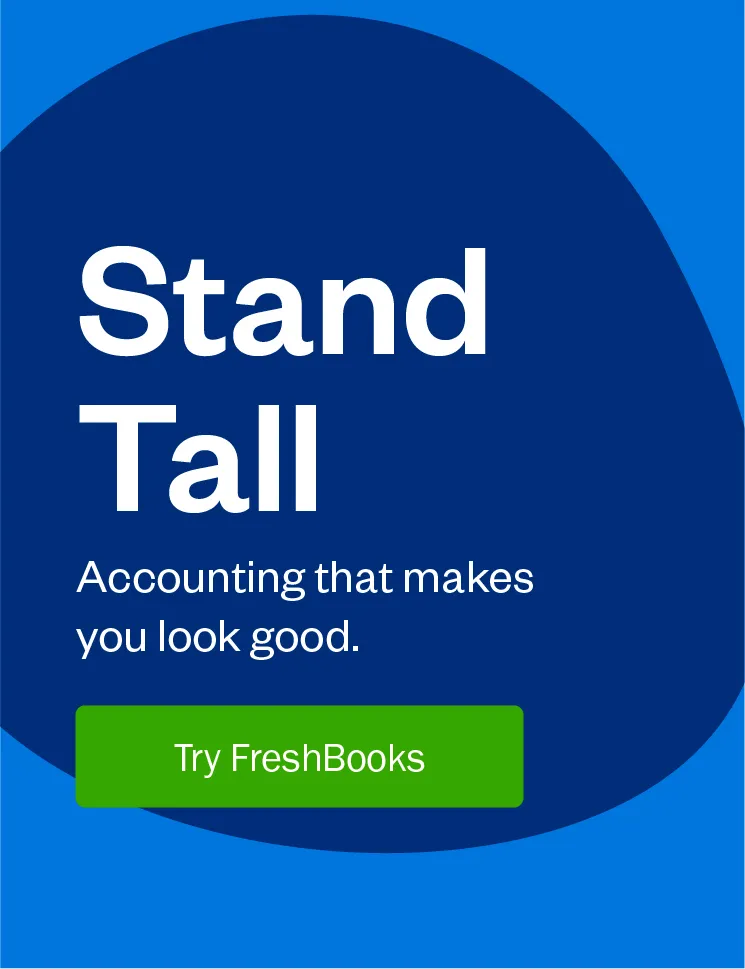You may not realize all the costs—large and small—that go into business operations. Here are 20 everyday small business expenses, plus 8 ways to keep them in check.

Starting a business from scratch can be a dream come true. But that dream can quickly become a nightmare if you only view your business through rose-colored glasses and ignore the startup costs and ongoing expenses of running one.
Many new business owners don’t realize how quickly expenses add up, especially when dealing with:
- one-time fixed costs (e.g., trademark fees, equipment purchases)
- renewable costs (e.g., business licenses, software subscriptions)
- variable costs (e.g., marketing, payroll, inventory)
Without proper budgeting and expense tracking, it’s easy to lose control of cash flow and fall short when bills come due. That’s why having a reliable financial management system is crucial from day one.
The following are 20 essential costs of running a business, grouped into one-time, recurring, and variable expenses, plus 8 smart strategies to manage them effectively.
Table of Contents
One-Time Expenses
The majority of your one-time expenses will be your business startup costs. Here, we list two one-time expenses that most businesses have and a few others to consider.
1. Equipment Expenses
Equipment is one of the most common capital costs in a business startup. It’s generally a one-time cost for most business owners, though monthly payments are available if you decide to lease your equipment instead.
Equipment needs will vary between small businesses, with some owners having smaller equipment costs than others.
For instance, if you’re a writer, you’ll likely only need a laptop and maybe a printer. But if you’re a videographer, you’ll need more complex equipment, including a computer, cameras and lenses, lighting, and a tripod. So, carefully consider your equipment needs and budget accordingly.
2. Incorporation Fees
Incorporation is the process of forming a company or corporate entity. You can identify a corporation or limited liability company with the words Inc. or LLC (limited liability company) at the end of a business’s name. Incorporating your small business has definite advantages, like tax benefits and shielding your personal assets from liability.
But it also comes at a cost. According to Entrepreneur magazine, expect to pay $500–$1,000 for lawyer’s and legal fees, your jurisdiction’s filing costs, and periodic mandatory filings.
3. Trademark, Copyright, or Patent Registration Fees
A trademark protects a business’s brand name and logo, a copyright protects an artist’s original work, and a patent protects inventions like new technologies.
The U.S. Patent and Trademark Office (USPTO) has a detailed primer on the benefits and costs of federal trademark registration.
For information on copyrights, registering your work, and the fees, visit the U.S. Copyright Office. For information on patents, registering your invention, and the fees, see the USPTO’s patent page.
4. Legal Fees
You’ll need to pay lawyer’s fees for drafting specific contracts like a founders’ agreement. A founders’ agreement is critical if you’re going into a partnership with a friend or family member, where a casual arrangement can backfire.
Hiring a lawyer to draft a founders’ agreement will set expectations. Depending on the complexity of your startup situation, this can cost hundreds of dollars.
Recurring Expenses
Your recurring expenses are usually operating costs that you pay for on an ongoing basis, such as rent or software subscriptions.
5. Insurance Premiums
Insurance is your safety net, protecting you from financial loss when things go wrong. The common types of insurance include:
- General liability insurance protects you from third-party claims for bodily or property damage. Your industry’s risk plays a significant role in the cost here.
- Worker’s compensation insurance provides benefits and wage replacement to employees injured on the job. The cost will depend on business size, location, and overall risk.
- Commercial vehicle insurance covers vehicle damage and bodily injuries on vehicles used for business purposes. The costs vary based on driving history, location of work, and vehicle type.
- Errors and omissions insurance, or professional liability insurance, is specialized insurance that covers you against lawsuits where clients sue for mistakes or omissions in your services that led to financial loss. Costs vary based on factors like industry, location, size, and quality control procedures.
6. Taxes
Many business owners fail to set aside extra money to pay taxes and may struggle come tax time. As a general rule, set aside 30% of your income after deductions for taxes. In the U.S., depending on your situation and business structure, you may be required to file quarterly estimated taxes. Also, your tax rate may be higher as a small business owner than an employee due to self-employment tax.
However, you can offset this with business tax write-offs or deductions.
7. Accounting and Bookkeeping Fees
The professional services of an accountant or bookkeeper can cost thousands of dollars upfront, but they can also save you money and help reduce your tax bill over time.
While accountant and bookkeeper roles overlap, they also differ. Accountants typically analyze and interpret financial data, whereas bookkeepers record and classify financial transactions.
Using cloud-based accounting software like FreshBooks can streamline bookkeeping and accounting tasks, making collaborating easier for you and your accountant. FreshBooks automates expense tracking, invoicing, and financial reporting, ensuring your records are accurate and current.
With features like automated bank reconciliation and tax preparation reports, you can minimize errors and make tax season less stressful. Plus, FreshBooks allows you to invite your accountant to access your financial data securely, reducing back-and-forth communication and making their job more efficient—potentially lowering your accounting fees.
8. Software and Tech Expenses
As a self-employed professional, technology can help you manage and grow your business, so it’s a cost to consider early on. Costs include:
- Accounting software to record, track, and manage finances and expenses. The right software will also give your accountant or bookkeeper access to the system to support your business. FreshBooks is designed for small business owners, offering user-friendly tools like automated invoicing, time tracking, and expense categorization. With built-in payment processing, you can get paid faster, and the mobile app lets you manage finances on the go.
- Hosting fees. You’ll likely want to create a website as part of your promotion efforts. For this marketing cost, you’ll need to pay for hosting (monthly or annually) and yearly domain renewal.
- Payroll software to pay employees and handle payroll taxes if you have a team. You can either manage this yourself or get an accountant to handle it. FreshBooks has built-in payroll, helping you streamline payroll management while ensuring tax compliance—all in one place.
9. Office or Coworking Space
Many freelancers and small business owners work from home in the early stages of their businesses. If this is you, you may outgrow your home office over time and eventually need to rent office space.
Depending on your location and the space needed, expect to pay hundreds of dollars (or more) each month. If your team is small, renting can be a significant cost. You may be better off signing up and paying for a temporary office or coworking space where your team can collaborate in an open-office environment.
10. Payroll Expenses
You’ll need to factor in payroll costs to hire an employee or contractor to support growth. Not to mention, the monthly payroll costs for a full-time employee are more than just the salary. They include employment taxes, insurance premiums, commissions, bonuses, and other benefits, like health insurance, paid time off, and retirement savings plans.
11. Business Licenses
Most states in the U.S. will require some form of business license when starting and registering a business. You’ll need to renew these licenses, often annually.
The exact requirements will vary by state, municipality, and industry. Consider the HVAC industry. In the U.S., some states require HVAC technicians to pass exams to become licensed and certified. Certification is obligatory in Massachusetts, Minnesota, and Arizona.
12. Membership Dues
Membership fees are another cost to consider if you’re planning to network. Joining your local Chamber of Commerce or Business Network International (BNI) group can help grow your business, but those membership fees aren’t cheap.
One networking mistake business owners make is joining groups with professionals precisely like them. While commiserating and swapping stories from the trenches can be helpful, you should also be present where your audience is, so you’re not networking in a vacuum.
13. Borrowing Costs on Business Loans
You may want to apply for a small business loan at some point to help grow your business. Small Business Administration (SBA) loans are an attractive option for small business owners due to their predictable monthly payments, low interest rates, and various loan types, such as SBA 7(a) loans, SBA 504 loans, and SBA microloans.
Be sure to factor in the borrowing costs (interest payments)—and be aware that defaulting on a small business loan can be costly.
Variable Costs
Variable costs are recurring but change based on season, output, and other factors.
14. Utilities
If you have office space, you’ll also need to budget for monthly utility costs, such as water, electricity, cable, and phone.
15. Office Supplies
A few boxes of pens or reams of printer paper may not seem like much, but the cost of office supplies can quickly add up. Try maintaining digital files whenever possible to avoid printing—it’s economically and environmentally smart! For instance, you can scan and upload your receipts from anywhere using online accounting software.
16. Business Credit Card Fees
If you accept credit card payments from clients, you’ll have to factor in the cost of credit card processing, also called interchange or surcharge fees. It’s typically a per-transaction flat fee and a small percentage of each transaction. Depending on your state, you may pass these fees along to your customers instead.
17. Travel Costs
You’ll need to factor in travel costs if you plan on visiting your customers directly, have lots of meetings out of the office, or run a company like a landscaping business that requires you to travel to the client for site visits and to do the actual work. Don’t forget about lodging and food!
18. Shipping Costs
If you’re selling physical goods online, you should consider shipping. The actual costs will vary depending on the product type, weight, courier, and the client’s location.
19. Inventory Shrinkage
Shrinkage—loss of goods due to damage, clerical errors, and so on—is also part and parcel of selling physical goods. Investing in a decent inventory management system can help reduce shrinkage.
20. Marketing Costs
You need strong marketing to attract clients. Every small business owner should create a website and have social media profiles. But depending on the nature of your new business, your marketing methods to get new business may include the following:
- printing and distributing flyers
- creating email and social campaigns
- hiring a publicist to help create buzz
- using Google’s Local Services Ads
- asking for referrals

8 Ways to Keep Your Expenses in Check
Now that you understand the expenses associated with starting and running a business, let’s look at how to keep them in check.
1. Automate your expense tracking
Staying on top of business expenses is essential for managing cash flow, claiming deductions, and staying tax-compliant. However, expense tracking can quickly become a chore without the right tools.
Manually logging expenses using spreadsheets, storing physical receipts, and trying to reconcile transactions can lead to the following:
- missed tax deductions from untracked business expenses
- delayed payments due to lost or forgotten receipts
- time-consuming reconciliations that take you away from running your business
Streamline expenses with accounting software
An expense-tracking tool like FreshBooks eliminates the hassle of manually recording business costs. With FreshBooks’ expense- and receipt-tracking feature, you can:
- Connect your bank account. When you connect your bank account or business credit card to your accounting software, transactions are automatically recorded daily.
- Store and organize receipts effortlessly. Snap a photo of a receipt with the FreshBooks mobile app, and it will be digitally stored and linked to your expenses.
- Categorize expenses for tax time. Assign tax-friendly business categories to each expense, making tax preparation easier.
- Get a real-time view of spending. Access all expense data in one place to monitor spending patterns and make informed financial decisions.
- Generate detailed reports. Use expense reports to track trends, identify cost-saving opportunities, and share financial insights with your accountant.
Track business mileage automatically
If you drive for business, tracking mileage is as essential as tracking expenses. FreshBooks’ Mileage Tracker makes it easy to:
- Track every trip automatically. The mobile app logs mileage in the background while you drive, ensuring you never miss a business-related trip.
- Differentiate personal and business travel. Easily mark trips as business or personal with a simple swipe.
- Calculate tax deductions instantly. FreshBooks applies the latest mileage deduction rates to maximize tax savings without manual calculations.
- View mileage reports. Access detailed reports showing total mileage, trips taken, and potential tax savings.
By combining automated expense tracking with mileage tracking, FreshBooks helps small business owners save time, reduce stress, and keep their finances organized—all in one easy-to-use platform.
2. Prioritize Your Spending
Find what’s necessary for business growth and start there. For instance, you won’t have time to keep up with every industry organization or have a presence on every social media channel.
So, prioritize where you want to spend your money and energy. If you’re not getting a good return on investment for a particular expense, it might be time to cut the cord or look at ways to economize.
3. Consider DIY Tools
There are many DIY marketing tools for small businesses out there. You can set up a website using Squarespace or Wix, create a logo, set up email marketing, create a social media presence, and run ads without paying for outside help.
Your business will eventually grow, and you’ll need outside help in addition to these DIY tools. The good news is that you can hire professionals who can jump in and use your existing tech stack.
4. Say “No” to Office Space, and Cost-Effectively Upgrade
Perhaps setting up your laptop in the corner of your living room no longer works for you. But if you can give your guest room or basement a makeover with the proper equipment to function like a home office, you may be able to put off renting space until later.
That said, you don’t want to skimp on any other expenses that will help keep your business on the legal straight and narrow. For instance, hire a lawyer specializing in your situation rather than relying on Google for legal advice. Otherwise, this can get you into hot water and cost you more money in the long run.
5. Hire Contractors Over Employees
If you need to hire employees but don’t quite have the budget for someone full-time, consider hiring a subcontractor or freelancer to start. You won’t have to worry about employee expenses like office space and benefits while they lighten your workload and help you scale. You can always turn to an employee as your situation changes.
6. Buy Second-Hand Equipment
Many small business owners spend money on used equipment—and with good reason. You can get some terrific second-hand deals if you’re patient and do your research. Some used equipment is practically new and often hugely discounted.
Just keep in mind that purchasing used equipment is a risk. There is a higher chance that it will break or not have the same warranty as buying it new—it may not have a warranty at all. If it breaks, you’ll have to pay to fix it, and over the long term, you may spend more than buying something new from the start.
However, you can avoid these scenarios by buying from reputable dealers who’ve inspected the product. If you plan to buy from a private seller, see if you can test the product before you buy it and check for any scratches and blemishes. Even better, meet up with the seller and take a friend with deep knowledge of how the product works to examine it.
7. Reduce Payment Delays
Late payments are a common challenge for small businesses. When clients delay payments, it disrupts cash flow, making it harder to cover monthly bills, pay employees, and reinvest in growth. Instead of spending time chasing payments, you need a system that streamlines invoicing and makes it easy for clients to pay on time.
Strategies to Avoid Payment Delays
To minimize late payments and get paid faster, follow these best practices:
- Send invoices promptly. Delayed invoices lead to delayed payments. An automated invoicing system like FreshBooks allows you to create and send professional invoices in seconds, ensuring clients receive bills on time.
- Offer multiple payment options. Accepting credit cards, Apple Pay, Google Pay, or direct bank transfers through FreshBooks Payments makes it easy for clients to pay. Clients can pay directly from the invoice with just a few clicks.
- Set clear payment terms. Clearly define due dates, late fees, and accepted payment methods on every invoice. FreshBooks lets you customize payment terms to encourage on-time payments.
- Use polite payment reminders. A simple “Please pay your invoice within…” can improve client responsiveness. FreshBooks automates friendly payment reminders, so you don’t have to follow up manually.
- Enable automatic late fees. To discourage late payments, you can set up automatic fees in FreshBooks, which apply when an invoice is overdue.
- Track invoice status in real time. Know exactly when a client has viewed or paid an invoice with FreshBooks’ tracking feature. No more guessing or chasing down payments unnecessarily.
- Offer deposits and partial payments. If you work on large projects, FreshBooks allows you to request upfront deposits or installment payments, reducing non-payment risk.
Simplify Payments With FreshBooks
FreshBooks Payments and Invoicing features eliminate the hassle of manual invoicing and delayed payments by offering:
- Customizable invoices. Create professional, branded invoices in minutes and send them via email.
- Online payment integration. Clients can pay directly through the invoice using credit cards, Apple Pay, Google Pay, or bank transfers.
- Recurring invoices and subscriptions. Automate invoicing for repeat clients with recurring billing.
- One-click payment reminders. Set up automatic reminders to gently nudge clients who haven’t paid.
- Instant payment tracking. Get notified when clients have viewed and paid invoices, reducing uncertainty.
- Multi-currency support. Accept payments from international clients without conversion hassles.
By leveraging FreshBooks’ invoicing and payment features, small business owners can speed up payments, reduce administrative work, and maintain a healthier cash flow—all while improving the payment experience for clients.
8. Build a Budget—and Stick To It
A business budget provides an overview of your finances and shows your current business income and expense sources. Use it to evaluate where you stand, identify where to cut spending and grow your revenue, and land startup funding from investors to grow your business. (Investors will want to see income versus expenses to get a sense of profits.)
Create a budget by tallying all income sources, calculating fixed costs, determining variable expenses, and predicting one-time spending. Then, combine it by subtracting expenses from income to determine your net income.
The Bottom Line on Business Expenses
Starting a business is exciting, but failing to account for startup and operational costs can quickly lead to financial roadblocks. Unexpected expenses, cash flow mismanagement, and late payments can make it harder to sustain and grow your business.
To keep expenses in check and maintain financial stability, you should:
- Track expenses automatically with tools that simplify record-keeping.
- Hire contractors when needed to avoid unnecessary overhead costs.
- Reduce payment delays by offering multiple payment options and setting clear terms.
- Build and follow a budget to ensure financial planning aligns with business growth.
How FreshBooks Helps You Stay on Top of Business Costs
Managing business expenses manually—using spreadsheets or stacks of paper receipts—can be overwhelming and prone to errors. Instead, a cloud-based accounting solution like FreshBooks helps you:
- Track expenses automatically. Connect your business bank account or credit card to FreshBooks and easily log every transaction.
- Capture receipts digitally. Snap and store receipts using the FreshBooks mobile app, eliminating paper clutter.
- Categorize expenses for taxes. Organize expenses into tax-friendly categories to make deductions simpler.
- Monitor cash flow in real time. Get a clear view of how much you’re spending versus earning so you can budget more effectively.
- Send invoices and get paid faster. With FreshBooks’ invoicing and payment tools, you can create professional invoices in minutes and offer multiple payment options to speed up client payments.
By using FreshBooks to automate your financial tracking, you’ll have a clear picture of your business expenses and better control over your cash flow—helping you avoid surprises and financial st
This post was updated in February 2025.

Written by Nick Darlington, Freelance Contributor
Posted on October 14, 2022

 5 Reasons Business Expense Tracking Is Important (And How to Do It)
5 Reasons Business Expense Tracking Is Important (And How to Do It) Use Your Invoice Payment Terms to Get Paid Faster
Use Your Invoice Payment Terms to Get Paid Faster Everything You Need to Know About How to Lower Self-Employment Taxes in the U.S.
Everything You Need to Know About How to Lower Self-Employment Taxes in the U.S.
![Starting a Business in the U.S.? A Checklist [Free Download] cover image](https://www.freshbooks.com/blog/wp-content/uploads/2023/06/starting-a-business-checklist-hero-226x150.png)




